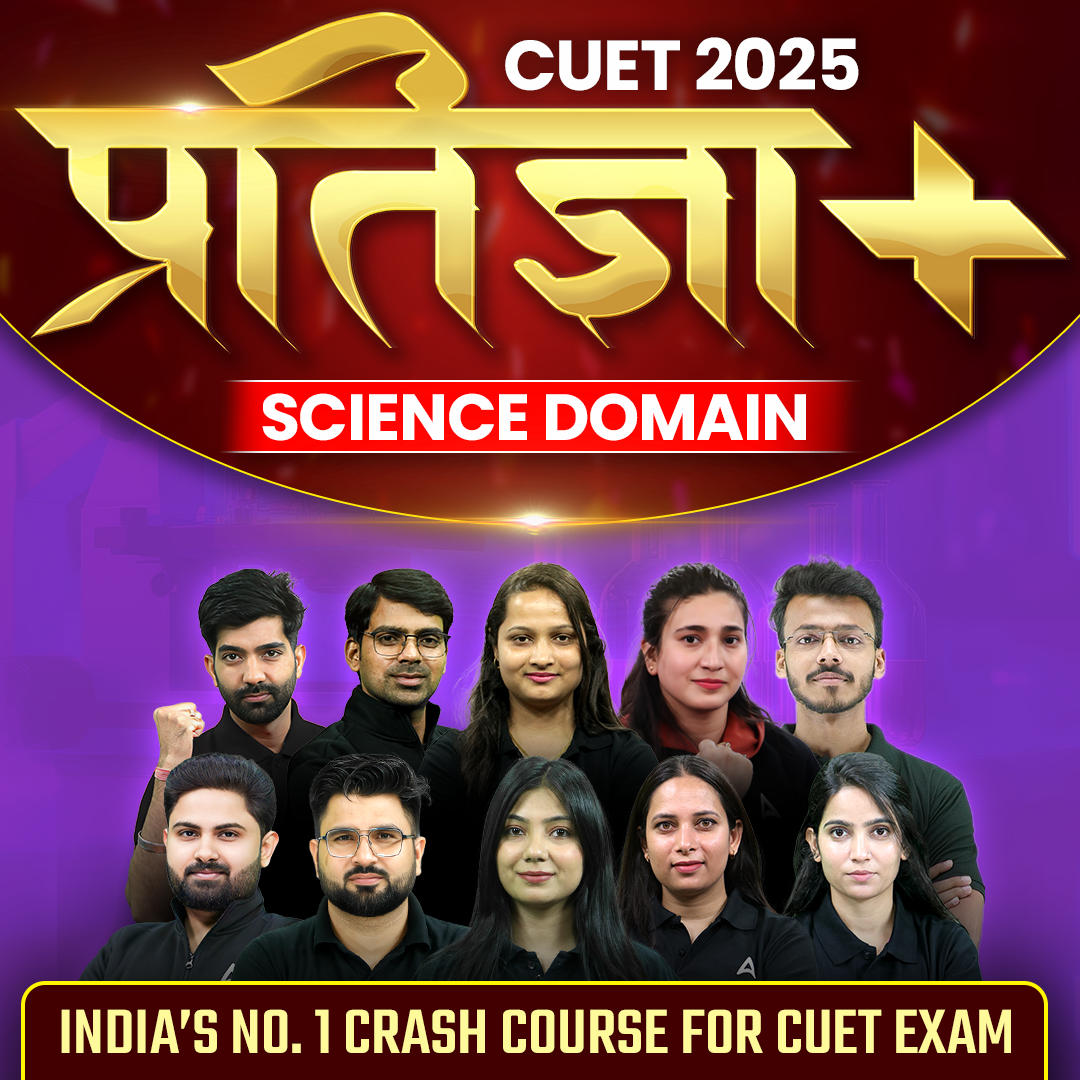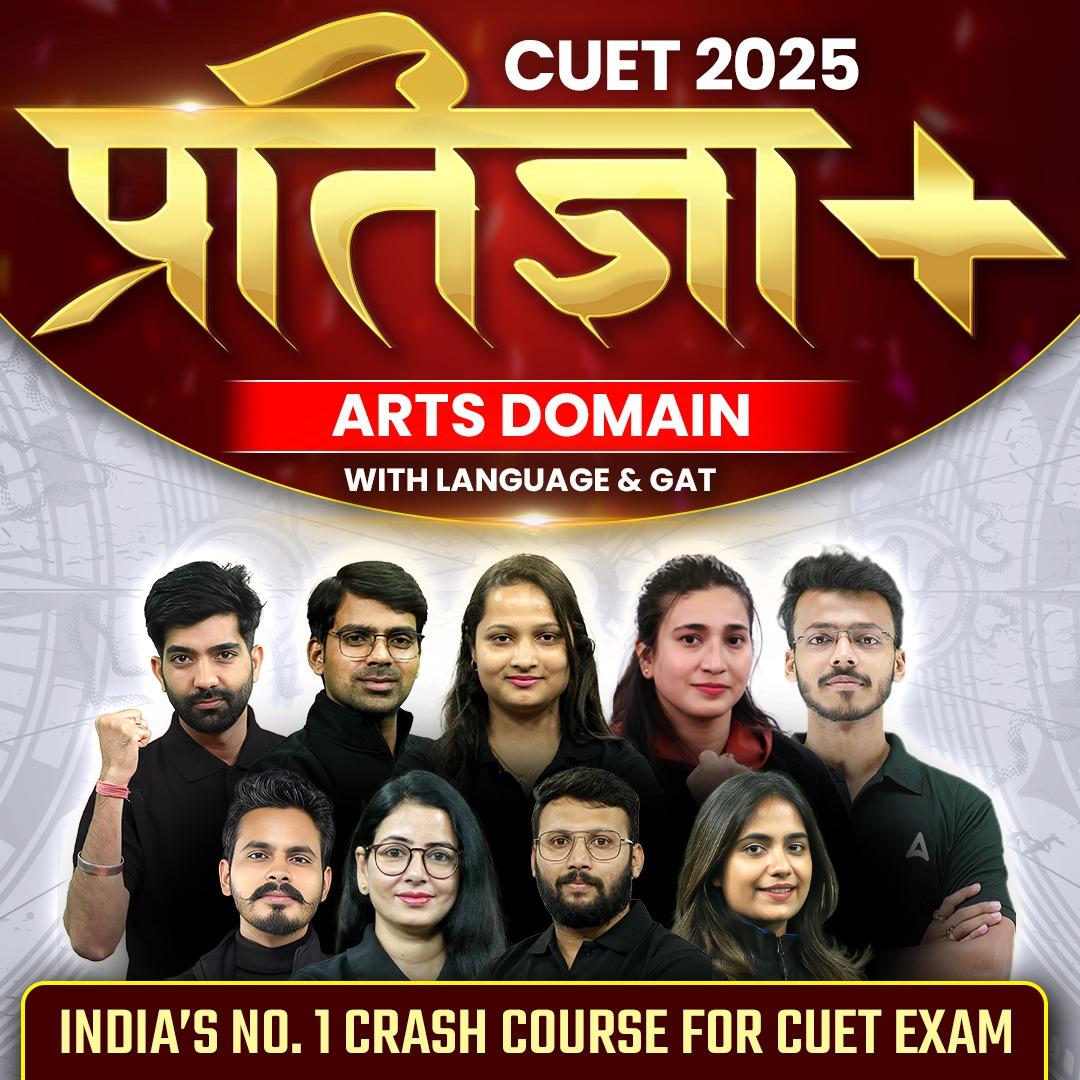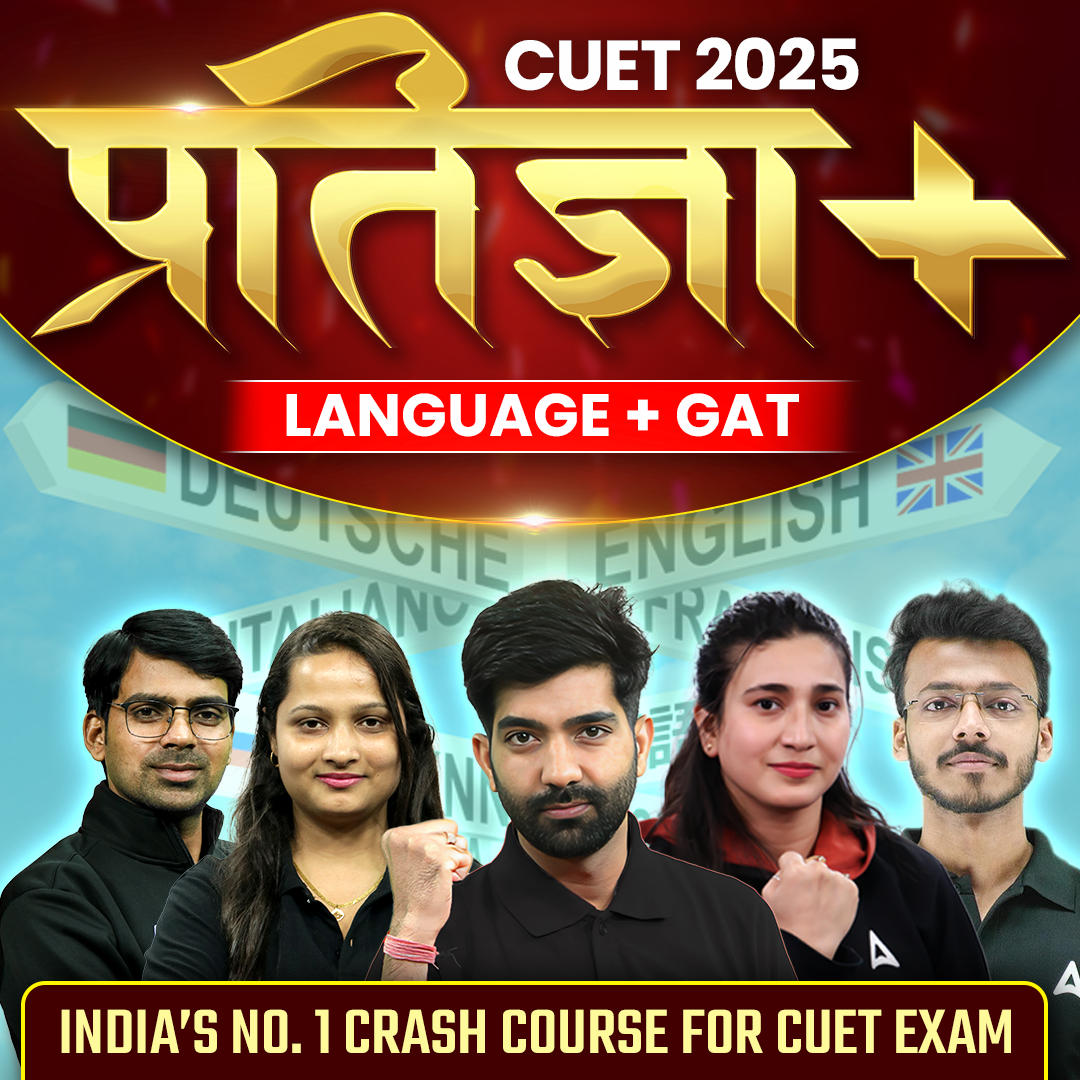Table of Contents
The National Testing Agency is all set to begin the CUET (Common University Entrance Examination) UG 2025 exams on May 08, 2025 and will continue till June 01, 2025. These exams are important for students who want to get into undergraduate programs at central universities.
During these exams, students are tested in various subjects like English, Mathematics, General Knowledge, and more, depending on their chosen field of study. It is crucial for students to prepare well by revising their syllabus, practicing previous years’ papers, and managing their time effectively during the exam. We have provided the top 100 important questions for the CUET English examination in the article below.
CUET English Exam: Most 100 Important Questions
Read the passage carefully and attempt the following questions:
In this passage, Gerald Durrell, the naturalist, describes his attempt to look after some baby hedgehogs when he was a young boy.
On my animal-collecting trips for zoos to various parts of the world, I have had to ‘mother’ quite a number of baby animals and I have always found it a most nerve- racking task. The first real attempt I made at being a foster-mother was to four baby
hedgehogs. The female hedgehog is a very good mother. She constructs an underground nursery for her young: a circular chamber about 30 centimeters below ground-level, lined with a thick layer of dry leaves. Here she gives birth to her babies which are blind and helpless. They are covered with a thick coating of spikes, but these are white and soft, as though made of rubber. They gradually harden and turn brown when the babies are a few weeks old. When they are old enough to leave the nursery the mother leads them out and shows them how to hunt for food; they walk in line, the tail of one held in the mouth of the baby behind. The baby at the head of the column holds tight to the mother’s tail with grim determination, and they move through the twilit hedgerows like a strange pricky centipede.
To a mother hedgehog, the rearing of her babies seems to present no problem. But when I was suddenly presented with four blind, white, rubbery-spiked babies to rear, I was not so sure. We were living in Greece at the time. and the nest, which was about the size of a football and made of oak leaves, had been dug up by a farmer working in his fields. My first job was to feed the babies but an ordinary baby’s feeding bottle was much too large for their tiny mouths. Luckily, a friend’s young daughter had a doll’s feeding bottle, and I managed to persuade her to part with it. After a time the hedgehogs took to this and thrived on a diet of diluted cow’s milk.
Q1. On the basis of your reading of the passage, what do you understand a naturalist’s job to be?
(A) a person who collects animals.
(B) a person who studies animals, plants and other living things.
(C) a person who loves to live in natural surroundings.
(D) a person who takes trips to zoos, the world over.
Choose the correct answer from the options given below:
(a) A only
(b) B only
(c) C only
(d) D only
Q2. Fill in the blank with the suitable option.
Gerald Durrell’s first experience of ‘mothering’ baby animals was ___________.
(a) exhilarating
(b) mentally strenuous
(c) disturbing
(d) extraordinary
Q3. The reason why Gerald Durrell concludes that the female hedgehog is a “good mother” is:
(a) She protects the young ones and trains them to hunt for food.
(b) She rears blind, helpless babies.
(c) She doesn’t pamper her young ones.
(d) She faces no problem in rearing her young.
Q4. On the basis of your reading the passage, put the following occurrences in the correct order:
(A) The first baby in line holds the mother’s tail with determination.
(B) When they are old enough to leave the nursery, the mother teaches them to hunt for food.
(C) The female hedgehog constructs a nursery before her babies are born.
(D) The thick coating of spikes on the babies hardens and turns brown when they grow old.
(a) C, D, B, A
(b) C, A, D, B
(c) C, B, D, A
(d) B, C, D, A
Q5. How do we know that the writer was a resourceful person?
(A) Observed the mother hedge-hog and learnt lessons in rearing.
(B) Had mothered many baby animals.
(C) Used a doll’s feeding-bottle to feed the hedgehog babies.
(D) Gave diluted cow’s milk to the babies.
Choose the correct answer from the options given below:
(a) A only
(b) B only
(c) C only
(d) D only
Read the following passage given below and answer the question.
We humans walk with two legs (called ‘bipedal’) and use two hands. The evolution of bipedalism began in our ancestors, the primates, about 4 million years ago. The primates not only gave us our blood groups, but our two feet and two hands as well. Primates exhibit characteristics that distinguish them from less evolved mammals. These include adaptations to live in trees (as monkeys do), big brains, heightened sense of vision, opposable thumbs to grasp the four fingers in each hand, and more flexibility in shoulder movements.
Dr. Tetsuro Matsuzawa of the Kyoto University, Japan, writes that the shared ancestor primates moved into tree tops and developed four hands from the four legs possessed by the terrestrial ancestor. This was an adaptation to arboreal life; enabling the efficient grasping of branches and tree-trunks. Subsequently, early human ancestors left the trees to start walking long distances across the land, bipedally. Thus, we created two feet from four hands during the course of evolution from our primate ancestors.
The anthropologist Carol Ward of the University of Missouri, US points out that the way we humans get around the world is different from any other animal on earth. We move around on the ground, upright on two feet, but in a unique way: with one foot after the other; holding our body fully upright in a characteristic series of motions. So, it’s a big deal to figure out how and why we walk the way we do, and how our lineage really diverged so much from ape like creatures.
The human brain is about three times as big as the brain of our closest living relative, the chimpanzee. Moreover, a part of our brain, called the cerebral cortex – which plays a key role in memory, attention, awareness and thought – contains twice as many cells as the same region in chimpanzees. We are, thus, smarter than apes.
Q6. As per the passage, which of the following does not make the primates different from their ancestors:
(a) Taste buds
(b) Bipedalism
(c) Flexible shoulder movements
(d) Bigger brains
Q7. The word ‘arboreal’ means:
(a) crawling movement
(b) related to water and trees
(c) relating to trees
(d) tendency to jump
Q8. ‘Subsequently’ means the same as:
(a) As opposed to
(b) As a consequence of
(c) Afterwards
(d) Without any significance
Q9. Which options don’t correctly explain why humans are smarter than apes. (as per the passage)
(A) Apes have a bigger brain size.
(B) Humans have a better memory.
(C) Humans can walk with only 2 legs.
(D) Human’s ability to process thoughts is more.
(E) Apes can climb trees.
Choose the correct answer from the options given below:
(a) (A) and (E) Only
(b) (A) and (C) Only
(c) (A), (C) and (E) Only
(d) (C) and (E) Only
Q10. Which of the following words means the same as ‘diverge’
(a) Intersect
(b) Separate
(c) Divulge
(d) Synchronize
Read the following passage and answer the questions that follows:
Knowledge has many forms and it is available at many places. It is acquired through education, information, intelligence and experience. It is available in academic institutions, with teachers, in libraries, in research papers, seminar proceedings and in various organizations and workplaces with workers, managers, in drawings, in process sheets and on the shop floors. Knowledge, though closely linked to education, comes equally from learning skills such as those possessed by our artists, craftsmen, hakims, vaidyas, philosophers and saints, as also our housewives. Knowledge plays a very important role in their performance and output too. Our
heritage and history, the rituals, epics and traditions that form part our consciousness are also vast resources of knowledge as are our libraries and universities. There is an abundance of unorthodox, earthy wisdom in our villages. There are hidden treasures of knowledge in our environment, in the oceans, bioreserves and deserts, in the plant and animal life. Every state in our country has a unique core competence for a knowledge society.
Q11. How is knowledge acquired according to the author?
(a) Through learning and applying concepts
(b) By getting skills and information
(c) Through hard work and sincerity
(d) By toiling day and night
Q12. In the author’s opinion, knowledge is available:
(a) Only in books
(b) In the company of intelligent people
(c) All activities of daily life
(d) In our heritage and history
Q13. Why does the author feel that out history is a vast resource of knowledge?
(a) Because it is easily available in books.
(b) History can teach us important things about life.
(c) We can learn about kings and queens and their lives.
(d) Because all people have a deep interest in history.
Q14. How is knowledge hidden in nature?
(a) Nature hides many secrets in itself.
(b) Observing nature can help us see the inter-relation.
(c) Oceans, deserts, plants and animal life teach us lessons about life.
(d) The desert teachers us how to overcome challenges.
Q15. Why is every state in India unique?
(a) Because people who live there are unique
(b) Because law and order situation is different in each state
(c) Because each state has a different cultural heritage
(d) Because some states are given priority over others
Ancient Egypt was the birthplace of one of the world’s first civilizations. This advanced culture arose about 5.000 years ago in the Nile River Valley in north-eastern Africa. It thrived for over 2,000 years and so became one of the longest-lasting civilizations in history.
The mighty Nile River was the lifeblood of ancient Egypt. Every year, it overflowed and deposited a strip of rich, black soil along each bank. The fertile soil enabled farmers to raise a huge supply of food. The ancient Egyptians called their country- Kemet, meaning ‘blank land’, after the dark soil. The Nile also provided water for irrigation and was Egypt’s main transportation route. For all these reasons, the ancient Greek historian Herodotus called Egypt ‘the gift of the Nile’.
The ancient Egyptians made outstanding contributions to the development of civilization. They created the world’s first national government, basic forms of arithmetic, and a 365-day calendar. They invented a form of picture writing called hieroglyphics. They also invented papyrus, a paper like writing material made from the stems of papyrus plants. The Egyptians developed one of the first religions to emphasize life after death. They built great cities in which many skilled architects, doctors, engineers, painters, and sculptors worked.
The best-known achievements of the ancient Egyptians, however, are the pyramids they built as tombs for their rulers. The most famous pyramids stand at Giza. These gigantic stone structures—marvels of architectural and engineering skills have been preserved by the dry climate for about 4,500 years. They serve as spectacular reminders of the glory of ancient Egypt.
Q16. The Egyptian Civilization lasted for
(a) Over 5000 years
(b) Over 365 days
(c) Over 4,500 years
(d) Over 2000 years
Q17. Choose the option that is incorrect
The Nile River was considered “the life blood of ancient Egypt” because
(a) It was the main transportation route
(b) It has black land
(c) It caused havoc when it overflowed
(d) It provided fertile soil and water for irrigation
Q18. In the passage the word ‘gigantic’ means: –
(a) Small
(b) Gorgeous
(c) Huge
(d) Ancient
Q19. The best known achievement of the ancient Egyptians is:-
(a) The creation of the world’s first national government
(b) The building of great cities
(c) The building of the Pyramids
(d) The contribution to the development of civilization
Q20. Match List I with List II

Choose the correct answer from the options given below:
(a) A-II, B-I, C-IV, D-III
(b) A-III, B-II, C-I, D-IV
(c) A-IV, B-III, C-II, D-I
(d) A-II, B-III, C-IV, D-I
Read the following poem given below and answer the question.
LOVE AND A QUESTION
A STRANGER came to the door at eve,
And he spoke the bridegroom fair.
He bore a green-white stick in his hand,
And, for all burden, care.
He asked with the eyes more than the lips
For a shelter for the night,
And he turned and looked at the road afar
Without a window light.
The bridegroom came forth into the porch
With “Let us look at the sky,
And question what of the night to be,
Stranger, you and I.”
The woodbine leaves littered the yard,
The woodbine berries were blue,
Autumn, yes, winter was in the wind;
“Stranger, I wish I knew.”
Within, the bride in the dusk alone
Bent over the open fire,
Her face rose-red with the glowing coal
And the thought of the heart’s desire.
The bridegroom looked at the weary road,
Yet saw but her within,
And wished her heart in a case of gold
And pinned with a silver pin.
The bridegroom thought it little to give
a dole of bread, a purse,
A heartfelt prayer for the poor of God,
Or for the rich a curse,
But whether or not a man was asked
To mar the love of two
By harboring woe in the bridal house,
The bridegroom wished he knew.
Q21. The mood of the poem is:
(a) Sombre and heavy
(b) Cheerful
(c) Celebratory
(d) Sad and dark
Q22. The poem ends with the bridegroom:
(a) Welcoming the stranger into the house
(b) Reflecting on his decision
(c) Celebrating the marriage with his bride
(d) Praying for the stranger
Q23. The line, “He asked with the eyes more than the lips”, means the eyes were
(a) Inquisitive
(b) Pleading
(c) Sparkling
(d) Lonely
Q24. The phrase ‘weary road’ is an example of:
(a) Simile
(b) Personification
(c) Metaphor
(d) Transferred epithet
Q25. Match List – I with List – II.

Choose the correct answer from the options given below:
(a) (A)-(III), (B)-(II), (C)-(I), (D)-(IV)
(b) (A)-(II), (B)-(IV), (C)-(I), (D)-(III)
(c) (A)-(III), (B)-(IV), (C)-(I), (D)-(II)
(d) (A)-(II), (B)-(I), (C)-(IV), (D)-(III)
Top 100 CUET English Questions PDF Download
Students preparing for the CUET UG 2025 English exam can now access the top 100 important questions to help with their preparation. These questions cover key topics and will help students understand the exam pattern better. To make it easier, we have also provided a PDF with all the important questions. Students can download the complete PDF by clicking on the direct link shared below. Practicing these questions will help students improve their understanding, boost confidence, and perform better in the exam. Make sure to go through all the questions carefully to strengthen your preparation for the CUET 2025 English exam.
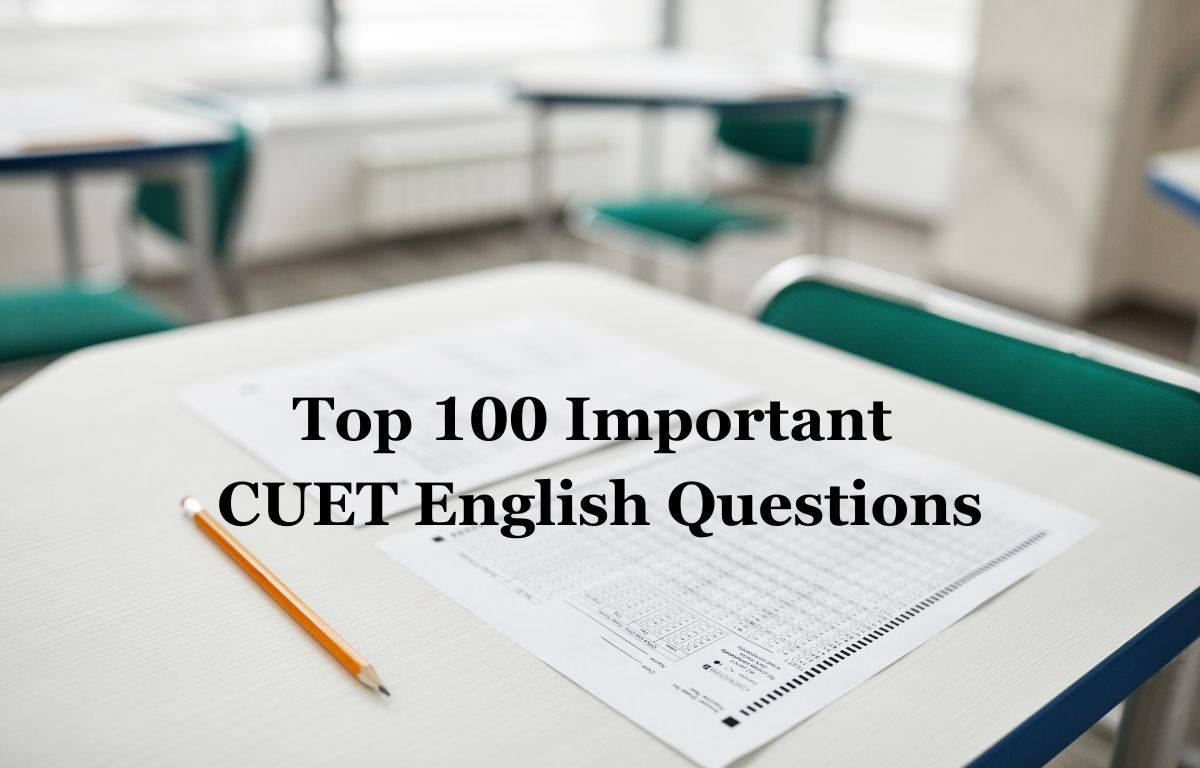







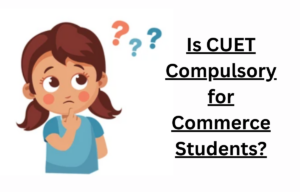 Is CUET compulsory for Commerce Students...
Is CUET compulsory for Commerce Students...
 Domain Subjects in CUET 2025 - Check Com...
Domain Subjects in CUET 2025 - Check Com...
 CUET Business Studies Previous Year Ques...
CUET Business Studies Previous Year Ques...
